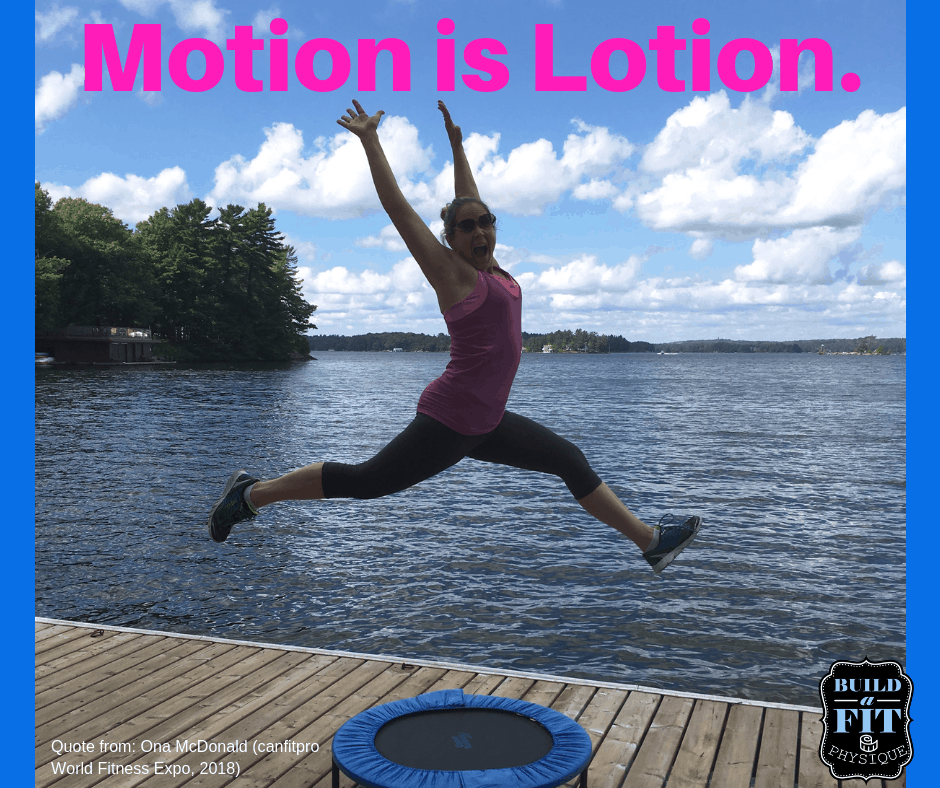So many people come to me looking for exercise assistance after they’ve been challenged with a injured body part. The most common injuries my clients have are shoulder, knee and low back injuries. They are caused by numerous reasons including falling, bad exercise form or posture, repetitive strain, or a lack of movement. When you get injured, it’s common to stop moving and sit or lay around a lot more. In my experience, this is the opposite of what you should be doing. Humans are built for movement, and in almost any situation I can think of, moving helps us. My own personal experience with a significant injury cements why I live by this belief.
My Own Personal Injury
When I was younger, I tore my groin muscle very badly, and ripped an SI joint out of place. Without getting into too much detail, I was in A LOT of pain. I immediately went to a walk-in clinic for an assessment since my own doctor wasn’t available to see me. I was told to stay off my leg for at least the weekend. Being a good patient, I obeyed the doctor’s orders and didn’t move an inch for two days.
I saw my own doctor first thing Monday. After hearing that I hadn’t moved for over forty eight hours, and seeing the pain I was in after that time, he quickly stated that I had slowed my progress down by at least one month by not moving! Dismal information to say the least. Especially because had I been given the correct instructions to move my injured body around immediately following my injury, I could have easily saved myself a lot of healing time.
This being said, there is a safe way to move and exercise right after an injury. I do think if you injure a body part and try to hop back into your usual routine, that could cause some damage. Exercising through pain isn’t a smart strategy in my eyes.
How to Exercise Your Injured Body Safely
I find it safest to workout in a lower impact way, when I’m dealing with any type of injury. It’s more important than ever to listen to your body, and avoid feeling more pain when exercising with an injured body part. Here are the movement methods I use on myself, or on a personal training client, when an injury is involved.
1. Embrace the hold.
If I’m dealing with an injury, I like to perform a lot of isometric hold work. This exercise format is very challenging, yet low impact. It’s a perfect way to build up your strength, while being cognizant of protecting your joints.
2. Work opposite muscles.
When you have an injured body part, it is often safe to exercise the uninjured areas of your body. For example, if you have hurt your leg, focus on exercising your upper body and core from a seated or lying down position. Be careful not to overdo working out any of your muscle groups while you’re healing though. As blood gets pumping throughout your body, it may cause the injured body parts discomfort.
3. Give Yoga a Try
Yoga is another low impact exercise format, that can really challenge your strength without causing more damage to an injury. It often stretches and exercises your body at once, which can be a more relaxing exercise format. There are my 5 favourite yoga poses.
To Sum it up…Keep Your Injured Body Moving, Safely
Humans are built to move; moving is beneficial to us, even when we’re injured. Listen to your body to avoid causing yourself more pain if you’re injured. Performing isometric holds, and working opposite muscles from the injured body parts, are great ways to stay active during your healing time. I also like performing yoga while healing. I find this practice to be relaxing and calming. So don’t stop moving if you’re injured. Work with a fitness professional to keep moving in a safe manner.


